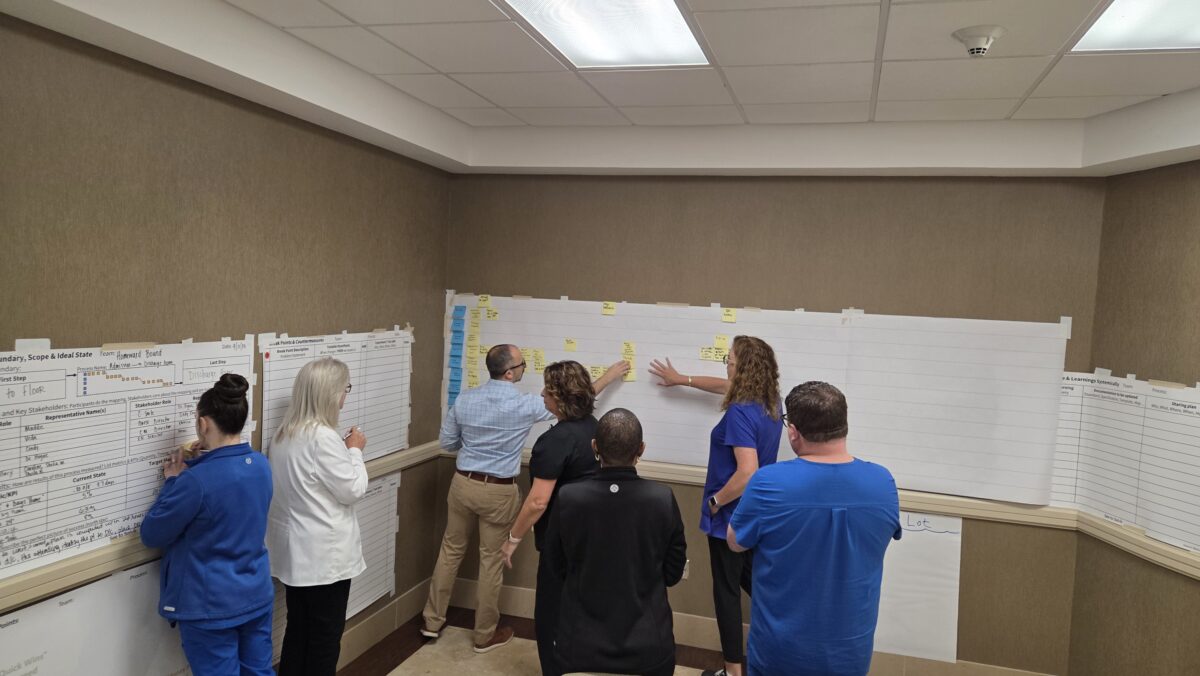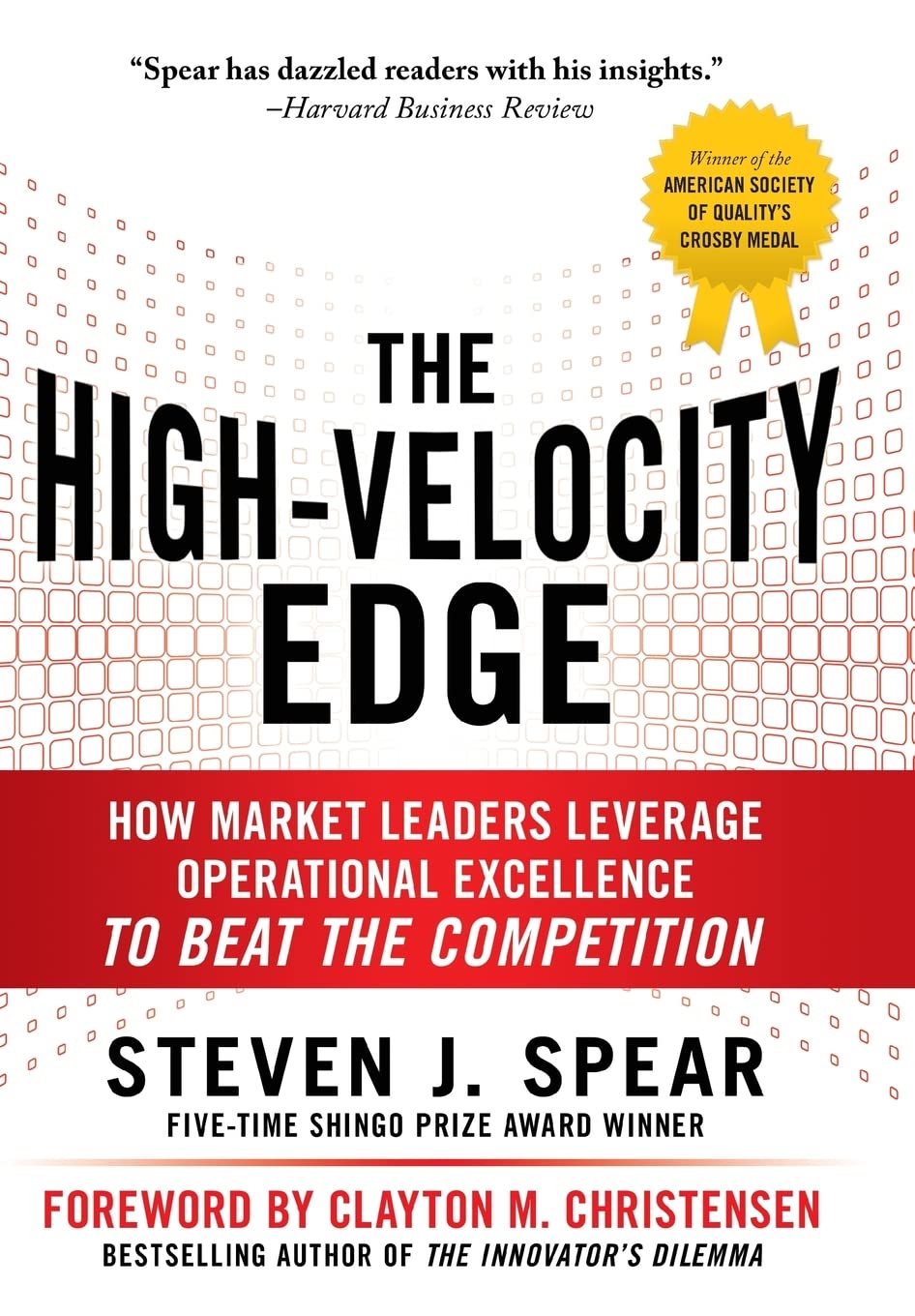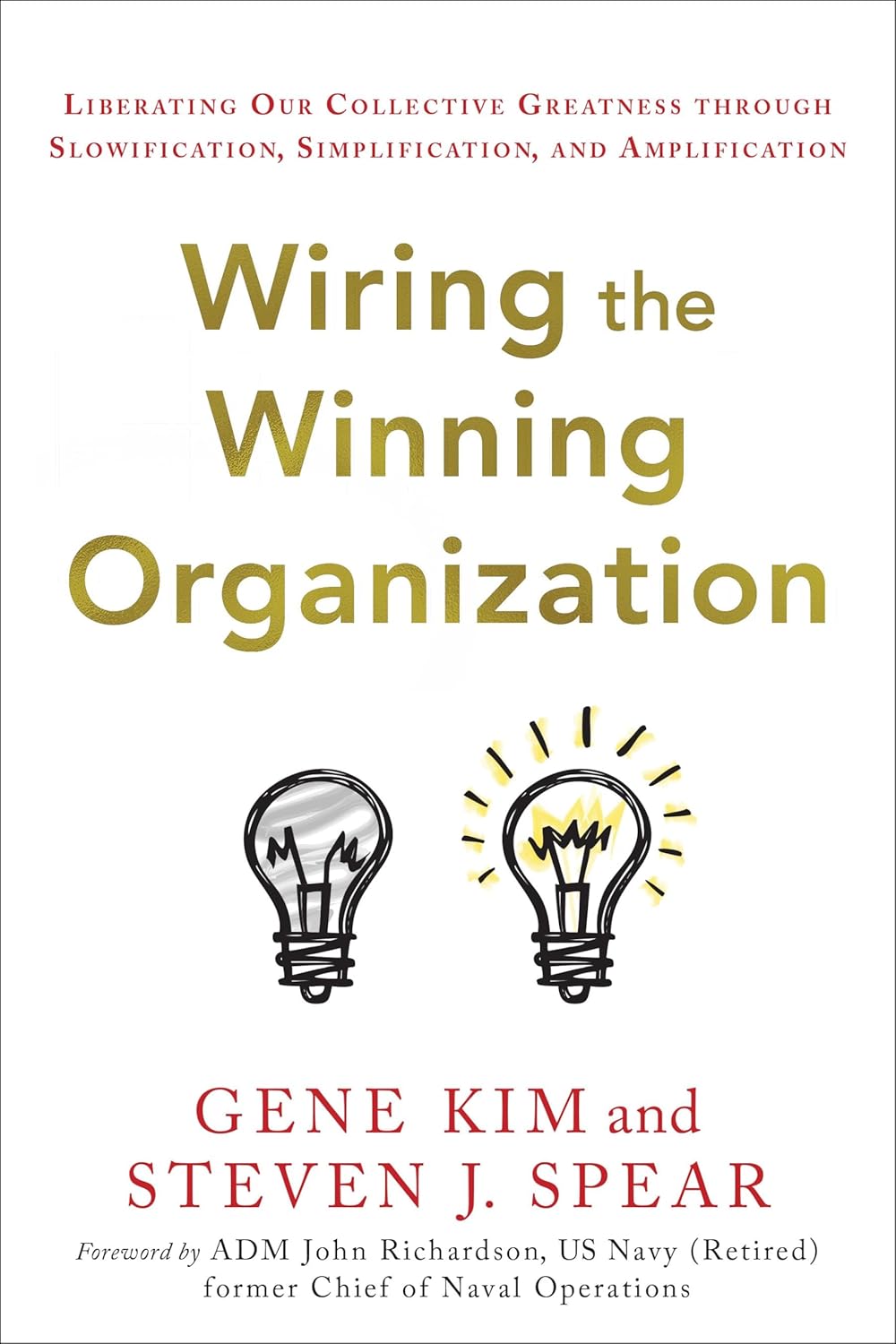
Collaborative process mapping empowers innovation by revealing invisible handoffs, bottlenecks, and friction points in workflows. By bringing diverse teams together to co-create visual maps of processes, organizations accelerate alignment, break silos, and foster an ongoing dynamic of learning and improvement. As Maria Mentzer and Steven Spear highlight, this approach turns process pain points into opportunities for breakthrough solutions and continuous improvement.
Innovation doesn’t fail due to lack of ideas; it fails when teams can’t work together to make them real.
Start mapping innovation success with See to Solve Flow™
Key Takeaways
- Collaborative process mapping is a catalyst for innovation and operational excellence.
- Involving all process participants turns hidden problems into visible opportunities to solve.
- Mapping together uncovers wasted effort, accelerates learning, and builds shared ownership.
- Using the right tools—like See to Solve Flow™—makes mapping reliable, actionable, and a basis for real improvement.
- Success depends on transparency, frequent engagement, and systemic sharing of learning.
Table of Contents
- Why Collaborative Process Mapping is Important for Innovation and How To Do It
- Key Takeaways
- Table of Contents
- What Is Collaborative Process Mapping?
- Benefits of Collaborative Process Mapping for Innovation
- How To Do Collaborative Process Mapping Step-by-Step
- Examples of Collaborative Process Mapping in Action
- Common Challenges and How To Overcome Them
- Why Use See to Solve for Innovation Mapping?
- FAQs about Collaborative Process Mapping for Innovation
What Is Collaborative Process Mapping?
Collaborative process mapping is the practice of co-creating visual maps of workflows with all stakeholders. Unlike traditional mapping, which is often done by a single department and kept static, collaborative process mapping uses digital, living, actionable maps so teams can see the real work, identify disconnects, and jointly improve how things get done.
Key Characteristics
- Shared visibility: Every participant can see the process and its bottlenecks.
- Co-created workflows: Teams map the flow of work together vs. top-down charts.
- Ownership for every step: Each role, activity, and handoff is explicitly defined.
- Amplifies issues: Opportunities for improvement are visible
- Actionable improvement: Experiments of ideas to test are agreed upon and shared.
Why It Matters for Innovation
- Innovation demands cross-pollination of ideas and fast cycles of testing and learning.
- Visual, collaborative process maps allow hybrid/remote teams to align rapidly, clarify methods and dependencies, empower decision making at point of work, and accelerate improvement.
- Mapping uncovers ambiguity and creates the environment for iterative improvement—key to innovation success.
- A living map representing current knowledge and ongoing improvements becomes a systemic way to rapidly share discoveries across the organization.
| Traditional Process Mapping | Collaborative Process Mapping |
|---|---|
| Owned by a single department | Co-created by all stakeholders |
| Static document | Living, digital map – always current |
| Pins blame for delays/defects | Focuses on continuous improvement & agile innovation |
| Too high-level to drive action | Highlights system issues for joint solutions |
| Used once, then stored away | Dynamic, ongoing vehicle for cross-functional learning |
Benefits of Collaborative Process Mapping for Innovation
Faster Idea-to-Execution Cycle
- Teams collectively see gaps and overlaps—no more hidden work slowing progress.
- Less time wasted on unclear handoffs, duplicated effort, or missed steps.
- Simplifies and democratizes innovation, rapid experimentation becomes clear and actionable for everyone.
- See to Solve Flow™ enables real-time collaborative mapping, tracking of improvements, and cross-pollination of ideas and discoveries.
Cross-Functional Alignment
- Teams avoid “tunnel vision” by working together.
- Ownership and transparency reduce friction between departments.
- Shared goals, priorities, and risks are visible to everyone.
Improved Problem-Solving
- Flow™ and See to Solve Alert™ allow instant capture of breakdowns, making issues visible as soon as they happen.
- Bottlenecks and pain points become opportunities for creative solutions.
- Flow™ guides teams through root-cause analysis and experimentation.
- Real-time feedback sparks innovation momentum.
Culture of Continuous Improvement
- See to Solve Advisory Services embed mapping as ongoing practice—not a one-time event.
- Flow™ makes it easy to share discoveries across the organization.
- Continuous review and adaptation keep the organization nimble and ready to capitalize on new learning.
Ready to see how collaborative mapping drives real results? Schedule a free process mapping consultation.
How To Do Collaborative Process Mapping Step-by-Step
Follow this practical framework, using See to Solve’s proven approach:
Step 1: Identify the Process to Map
- Choose a workflow with cross-team dependencies (e.g., product launches, onboarding, or service delivery). If your process is long and complex, break it up into manageable modules to map separately, then connect later.
Step 2: Gather Stakeholders
- Involve representatives from every function, especially those who actually do the work.
Step 3: Map Roles and Tasks
- Use sticky notes or See to Solve Flow™ to create swim lanes for roles.
- Add activities as they actually happen and lay them out across time.
- Define sequence, timing, methods, and success criteria.
Step 4: Define Handoffs and Dependencies
- Identify where outputs from one step become inputs for the next.
- Think of handoffs as triggers for the next activity to start.
Step 5: Add Real-Time Issue Capture
- Capture process breakpoints directly in Flow™
- Integrate Alert™ for instant visibility of bottlenecks
Step 6: Review, Test, Experiment, and Improve
- Run retrospectives using Flow™ to empower teams to experiment and adjust.
- Use Problem Statements, 5Why? root-cause analysis, and hypothesis testing in Flow™
- Assign owners, due dates, and experiments, capture discoveries and actions.
- Advisory coaches help teams use the map to drive learning and innovation.

Checklist: 8 Steps to Collaborative Process Mapping
- Identify process to map
- Gather all stakeholders
- Map roles & tasks across time
- Define Handoffs
- Add issue capture and analysis
- Capture and assign experiments
- Share discoveries
- Review, update, and improve collaboratively
Examples of Collaborative Process Mapping in Action
Example 1: Tech Company – Fast Customer Sample Delivery
Background & Challenge: A fast-growing tech company ranked last in customer satisfaction due to missed deadlines and quality issues. Despite having talented and hardworking teams, problems stacked up, and firefighting became the norm.
Mapping the Process: Inspired by Steven Spear’s book “The High Velocity Edge,” leaders piloted collaborative process mapping on one of their critical workflows: fulfilling customer requests for pre-production component samples. The mapping team, including sales, marketing, engineering, and operations, traced every step from incoming request to delivery commitment.
Breakthroughs:
- The team mapped roles, activities, and data handoffs in detail, then tagged handoff delays, bottlenecks, and pain-points on the map.
- Rapid experimentation to test improvement ideas identified a key bottleneck: incomplete data in a core system created manual workarounds and slow response times.
- By engaging IT in a “process map walk,” they highlighted the root issue—and IT fast-tracked a solution.
- Result: Average turnaround dropped from 10 hours to just 10 minutes. The company’s culture shifted from reacting to proactively preventing issues. Within two years, thousands of team members were actively mapping and improving their processes. Customer scores soared.

Example 2: Healthcare – Reducing Patient Length of Stay
Background & Challenge: A multi-hospital healthcare system faced overflowing beds and costly patient delays in its observation units, leading to lost revenue and staff frustration.
Mapping the Process: Senior medical leaders teamed up with See to Solve’s advisory group to map every activity and handoff for observation unit patients, using See to Solve Flow™. Frontline staff, clinicians, and department heads joined virtual map-building workshops, tracking patient journeys minute by minute.
Breakthroughs:
- The map revealed 43 distinct process breakpoints—many causing repeated delays.
- Teams prioritized 24 improvement actions by potential impact, focusing first on “quick wins” that could be rapidly implemented.
- The most critical barrier: ancillary service scheduling lagged most, impeding patient flow.
- Result: By prioritizing cardiac and MRI testing and urgent consult protocols, observation unit length of stay was cut from ~37 hours to as little as 15. Frontline staff reported less frustration and better care delivery.

Common Challenges and How To Overcome Them
Too Busy Fighting Fires to Spend Time on Prevention
- Leaders must prioritize time for teams to map. Schedule a Model Line workshop to practice this.
- Set expectations that stepping aside from daily routines to improve work is valuable.
- Provide expert coaching and facilitation to help teams get started.
Resistance to Change
- Involve the people actually doing the work – they’re the real process experts.
- Foster psychological safety and open, curious discussion.
- Leaders’ role-model commitment to improvement—participate in mapping events and map walks.
- Celebrate quick wins to build motivation and momentum.
Overcomplicating the Map
- Break complex processes into manageable chunks.
- Keep it simple – document who does what, when, and who relies on whom.
- Focus on practical details to find useful improvements and share learning.
Lack of Stakeholder Engagement
- Include key experts from supporting teams and functions.
- Demonstrate how input leads to visible improvements and quick wins.
- Invite supporting groups to a map walk to show impact first-hand.
Why Use See to Solve for Innovation Mapping?
See to Solve combines Steven Spear’s proven process mapping and problem-solving principles with user-friendly, digital tools for real-world, cross-functional collaboration:
- Visualize complex workflows in swim lanes—make roles and handoffs explicit.
- Use Alert™ to capture issues, discover root causes, and accelerate solutions.
- Track and spread improvements and lessons learned across the organization.
- Build innovation capability with advisory and expert coaching
- Schedule a free process mapping consultation to start your own process transformation.
Map your next innovation with See to Solve’s Flow™. Start today!
Turn bottlenecks into breakthroughs with See to Solve’s Alert™.
FAQs about Collaborative Process Mapping for Innovation
How does process mapping support innovation?
Collaborative process mapping reveals hidden workflow issues, bottlenecks, and disconnects. Making these visible through co-created maps enables rapid testing, adaptation, and improvement—unlocking innovation.
What tools are best for collaborative mapping?
Digital tools like See to Solve Flow™ let teams map, experiment, and improve together in real time.
How is collaborative mapping different from traditional mapping?
Collaborative mapping is cross-functional, real-time, always evolving, and focused on ongoing improvement—in contrast to traditional, one-off static process maps.
Can remote and hybrid teams use process mapping effectively?
Yes! See to Solve Flow™ supports distributed collaboration, action tracking, and instant co-editing—the same benefits for remote and hybrid teams.
Who should be involved in process mapping workshops?
Invite all stakeholders involved in the workflow: front-line operators, managers, decision-makers, customers – anyone with insight or a dependency on the process.
How often should a process map be updated?
Update your map whenever improvements are made or new issues are found – keeping your map dynamic turns it into a central record for continuous learning.
How does See to Solve Flow™ help innovation teams?
It provides actionable visualizations, integrated issue tracking, collaborative features, and advisory support – all focused on building sustainable innovation capability.
Resources:
- View Steve Spear’s MIT Executive Education course Leading Organizations for High Velocity performance
- Read excerpts from The High-Velocity Edge: Chapters 1, 4, & 5 and Chapter 11 Healthcare
- Read excerpt from Wiring the Winning Organization.
Order Steve’s book, The High-Velocity Edge here

Order Steve’s book, Wiring the Winning Organization here

| Steven Spear DBA MS MS Principal, See to Solve LLC Senior Lecturer, MIT Sloan School of Management Senior Fellow, Institute for Healthcare Improvement Author, The High Velocity Edge Click Here For Steve Spear’s LinkedIn |
